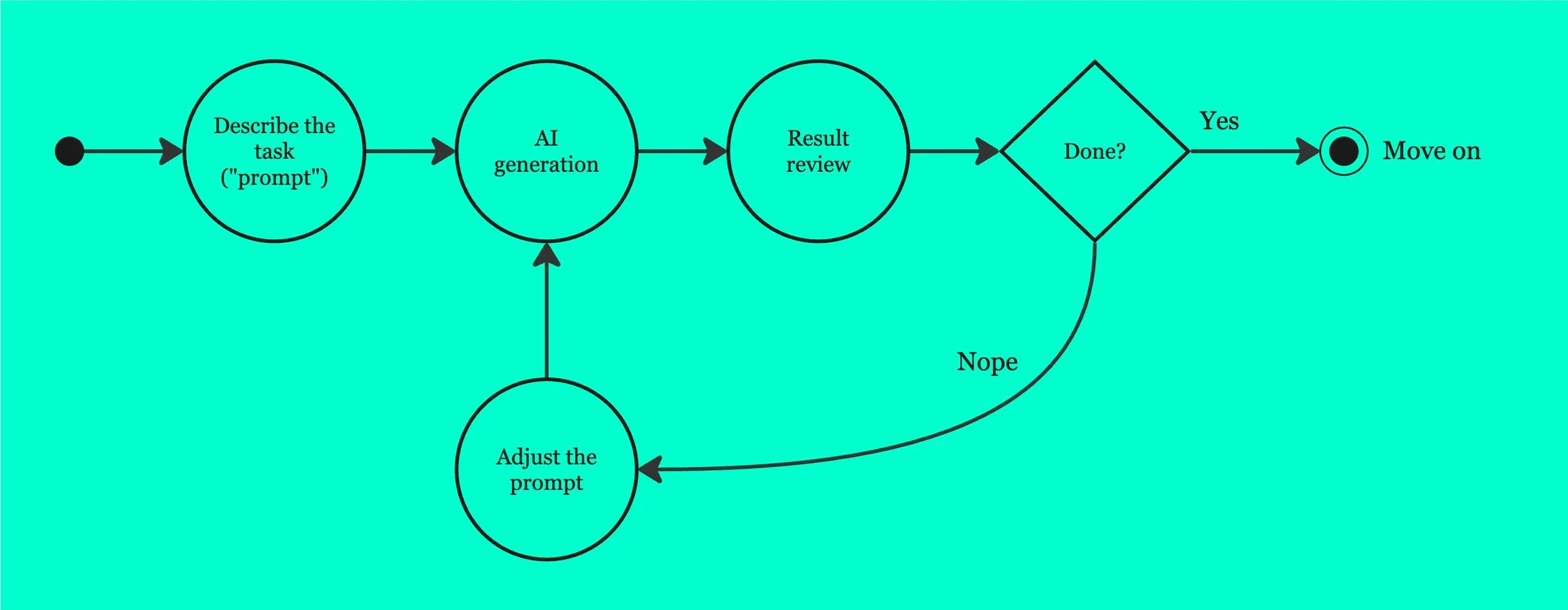Beyond Vibe Coding
by Ole Breulmann, 4/2/2025
Vibe coding is here to stay. It lowers the barrier to software development, empowering non-engineers to spin up prototypes — even production-ready apps — in a matter of days. Sure, there are limits to what’s possible today. But these tools are just getting started.
Personally, I care less about the “vibe” — and more about the raw productivity boost they unlock for experienced engineers like me.
In the last weeks I built a small pet project with Cursor — and I was easily 15x faster. Code quality stayed high because I reviewed every single line the copilot suggested, tweaking prompts until the output hit the mark — or deciding it was faster to just write the thing myself.
Review isn’t overhead. It’s feedback. It completes the loop, sharpens the prompt, and speeds up the whole process. And using these tools as an experienced engineer is more about enhancing what we usually do than vibing.
To me AI copilots feel like cognitive implants straight out of a cyberpunk story — not wired into our brains, but operating as external extensions of our minds. They amplify recall, accelerate synthesis, and speed up feedback loops, letting us work at a higher level of abstraction without losing grip on the low-level execution.
Engineering teams that learn to truly harness these tools to speed up while guarantee security, stability and compliance will unlock absurd levels of productivity. They’ll ship faster, explore broader solution spaces, and refactor entire systems in a fracture of the original time.
Everything is moving fast — not just technically, also culturally. The future is here. And the momentum is freaking epochal. Embrace it or fall behind. There is no alternative. We are cyberpunks now.
A shift of the product management / developer ratio
One of the more subtle — but profound — shifts in AI-driven development is the changing ratio between product managers and developers. As engineers become significantly more productive, the traditional balance begins to tip. A smaller team of developers can now ship faster and maintain high quality — because they know how to guide AI tools, review output critically, and still write clean, well-architected code themself where it is needed.
Meanwhile, the scope of what product managers handle — stakeholder alignment, user research, strategy, internal politics — remains stubbornly human. This creates a potential bottleneck on the product side. To keep up, product roles will need to become more technical and deeply embedded in AI-powered solution creation and the ratio itself has to change — fewer PMs per team, or PMs working in entirely new ways. The old 1:7 PM-to-dev rule of thumb is already obsolete.
The rocket is now really taking off. Can you feel the G?
PS: Watch this video if you want to know what real vibe coding looks like (duplicate from top)


